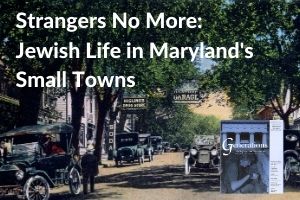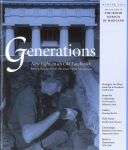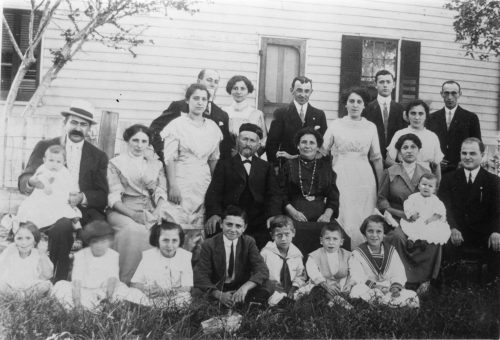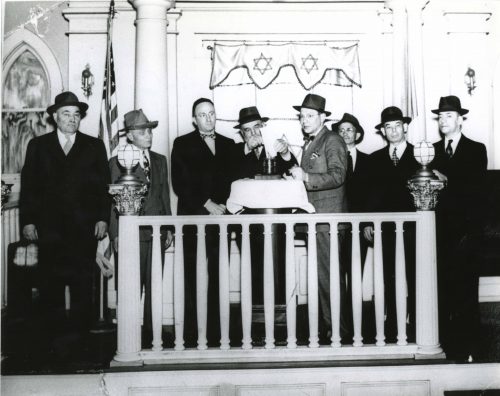Making Jewish Community

 Part 4 of “Strangers No More: Jewish Life in Maryland’s Small Towns. Missed the beginning? Head there now! Written by Karen Falk, former JMM curator. Originally published in Generations – Winter 2001. If you would like to purchase a hard copy of this issue, please contact our shop, Esther’s Place, at 443-873-5179 or email info@jewishmuseummd.org.
Part 4 of “Strangers No More: Jewish Life in Maryland’s Small Towns. Missed the beginning? Head there now! Written by Karen Falk, former JMM curator. Originally published in Generations – Winter 2001. If you would like to purchase a hard copy of this issue, please contact our shop, Esther’s Place, at 443-873-5179 or email info@jewishmuseummd.org.
When Hannah Cohen’s father and mother arrived in Bel Air, their arrival increased the Jewish population of the area by about one-third. Surprisingly, however, there was no sense of immediate recognition, friendship, or mutual assistance among these few Jewish families. In fact, not all Jews who came to small towns chose to associate with one another. Some preferred to remain anonymous in a Gentile milieu, while others were sensitive to the cultural differences among European immigrants from different countries. Still others put greater effort into maintaining their family ties outside the town than in cultivating relationships with new arrivals. Business competition, class differences, and personality conflicts also prevented Jews form associating more closely with their co-religionists. As Charlotte Fox explains:
You know these people were spread out in the Shore. Until the synagogue was built, the community really was not unified. We had maybe one or two families who went to New York or Baltimore for the holidays, and the rest of the community was not interested in being outwardly Jewish. When the shul [synagogue] came they did gravitate there, and it became just a wonderful place for the Jews to get together. Building the synagogue shook the bushes and got them out of the bushes in the surrounding communities.
Of course, this kind of reticence was not the experience of all Jews in all communities. As described earlier, Samuel Weinberg readily used his ethnic connection in Frederick when he found employment in 1860 with James Landauer, one of the Jews already established in business there.
By the 1940s, when Mrs. Fox arrived as a bride in Easton, almost all of Maryland’s communities of thirty or more Jewish families had established congregations, and many were planning or would soon plan to build a synagogue. When a congregation, which can exist for years in a series of rented quarters, builds or renovates its own dedicated space, it becomes the focus for the Jewish community – a space for worship, public religious and secular celebrations, and educating the next generation. The physical presence of a synagogue signals the Jewish community’s intention to persist, and, in one of its most important roles, becomes a source of information about Judaism for the Gentile community.
In addition to the earliest small-town congregations already noted, B’nai Abraham in Hagerstown was organized in 1892, a congregation had been meeting in Pocomoke City since about 1900, and Kneseth Israel was founded in Annapolis in 1906, although it, too, had been gathering informally from an even earlier date. Beth Israel was built by the tiny community of Brunswick in 1917, and – perhaps spurred on by Brunswick’s example – the venerable community of Frederick reorganized itself in 1917 as Beth Sholom Congregation. After a fitful start, the congregation renovated a hall for a synagogue in 1923.
Another, later spate of synagogue construction took place in the 1950s. Pocomoke City had long bene a focus for religious organization on the Eastern Shore. In 1948, The Congregation of Israel built a synagogue there. A few years later synagogues were built in both Salisbury and Easton (1951). The St. Mary’s County community, with roots reaching back to the beginning of the 20th century, erected a synagogue in Lexington Park in 1954, and the Harford Jewish Center acquired a space in Havre de Grace in 1955.

What this list of places and dates masks is the debt owed to specific individuals or families for stimulating the founding and building of several of these congregations. Although there were possibly as many as ten or twelve Jewish families scattered throughout the southern Shore in the 1800s, for example, these families might never have organized a central meeting place in Pocomoke City had not Faivel Heilig, a learned man trained as a shochet (ritual butcher) settled there with his large family in 1901. Heilig’s seven unmarried daughters were as much of a draw to the Pocomoke community as his ability to act as a chazzan cantor). The five Fox brothers, who maintained stores in several towns in Talbott and Dorchester Counties, pooled their influence to found the synagogue in Easton. In Frederick, the Weinberg family’s donations of money and property and their forceful leadership gave the long-stalled building process a much-needed jump-start. This pattern of decisive individual leadership in communities throughout the state is one of the salient characteristics of Jewish life in small towns.

Compromise is another important characteristic of small-town synagogue life. The Jewish congregational tendency to splinter along sectarian lines is so well known that It has become an oft-repeated joke or tag line: “And there’s the synagogue we don’t go to.” In small towns, these disagreements are a luxury the community cannot afford. All of the towns mentioned founded synagogues which followed a middle-of-the-road tradition, with the notable exception of Cumberland. The German-founded B’er Chayim became Reform at an early date, so Cumberland’s more traditional Eastern European immigrants established Beth Jacob Congregation in 1913. With a Jewish population approaching 700 in those years, Cumberland was the only Maryland city outside of Baltimore to support more than one congregation.
Continue to Part 5: Building a Jewish Identity, publishing February 18, 2019.
